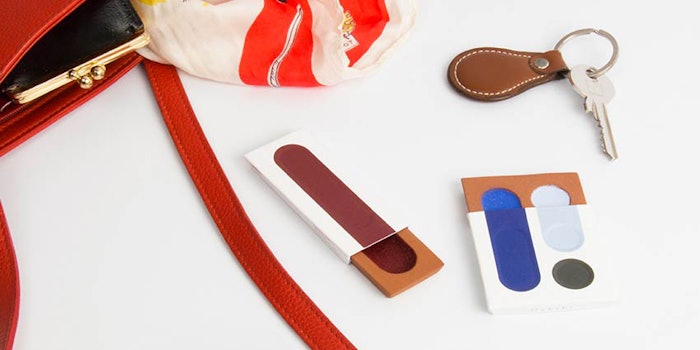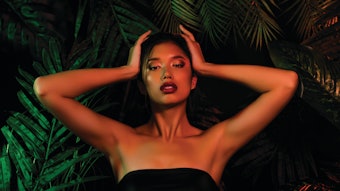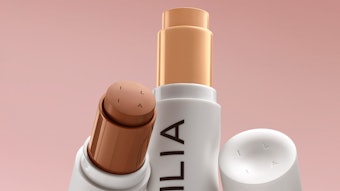
The range of lipstick, blush and eye shadow prototypes was inspired by a trip to Morocco, where Ramain-Colomb discovered Berber lipstick. The pigment of a traditional Berber lipstick, called Aker Fassi, is typically comprised of poppy and pomegranate and is applied to the lips with a whetted finger.
"This little traditional cosmetic object is made of clay and covered by a pigment," she explained to Global Cosmetic Industry. "I was extremely surprised by the shape and the material (terra-cotta)..."
Traditional Concept, Contemporary Format
The designer sought to reinterpret this classic concept with a "modern context, and incorporating it into our everyday life," she noted.
To update the Berber lipstick concept for the 21st century, Ramain-Colomb focused on developing "a compact object which slips into our pockets or in our bags, ready to use for any moment of the day."
As such, she built the designs around geometric shapes.
She also wanted a format that offered versatility: "Because we move a lot, we want to redo our makeup several time during the day. We want to change our colors following the fashion."
Sustainable Traditional Materials

As part of her research, Ramain-Colomb reviewed makeup designs of the past and present and noticed that many were rendered "clean, smooth and shiny" via use of plastic and glass. Many, she noticed, featured transparent elements that allowed consumers to see the product inside.
Ramain-Colomb described one design, Guerlain Terracotta Khol Loose Powder Eyeliner, as "a wonderful object, very delicate," but added that she sought to keep her packaging concepts natural, rather than plastic.
The traditional Berber lipsticks' terra-cotta was compelling, Ramain-Colomb explained, because, it is biodegradable.
She used a similar approach to the makeup itself: "I was completely interested in working on something totally natural and that told a story. The powders are naturals, a mix of rice powder, natural talc, karity [shea] butter, sesame oil, mineral oxides (for the colors) and silicates (for the glitters)."
Ramain-Colomb continued, "I crushed powders by hands in a mortar. All the pumps were weighed with accuracy by following recipes. For the rectangular shape (which is the lipstick), I used the Akker Fassi pigment bought in Morocco."
Terra-Cotta Innovation
The decision to work with terra-cotta in her makeup update was obvious, said Ramain-Colomb. To develop her prototypes, she worked with the artisinal ceramist Peter Fink, using non-industrial pouring techniques. Scaling up the designs will require industrial fabrication, similar to the compression process of producing terra-cotta tiles.
The paper packaging around the terra-cotta vessels are illustrated with the shapes contained within to mimic the transparency Ramain-Colomb observed among contemporary makeup brands.
Ease of Use
To support the convenience aspect of the range, Ramain-Colomb kept the same finger-applied format as traditional Berber makeup.
"Accessories are not essential," she explained. "I find that a return to simple uses very beautiful."
Scaling Up the Concept
She admits, however, that she finds the regulatory landscape challenging and is actively looking to connect with those in the beauty industry who might be willing to help her launch the range.
Have a thought about the project or want to connect with the designer? Just reach out to the author in the contact link above.










